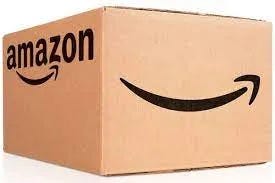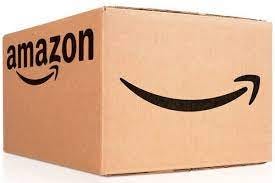I want to start with a short rant…
I went to Wendy’s once to get some chicken nuggets and was astounded at all the paper that came with it. The 5 piece nuggets came in its little carton, in a big bag with some paper-packaged salt and pepper (and who even uses that on nuggets?) and a wad of napkins.
The paper to nugget ratio was like 2:1. A lot of paper for 5 bites of corrugated chicken.
A few years ago, I was doing a project for work, and a couple dozen products were shipped to me. One product, a yoga foam roller. It was 36 by 6 inches. But it came in this Amazon box that was like 32x24x12. A small bathtub sized box. For a piece of foam.
And don’t get me started on those food box subscription services… Chilled boxes arrive weekly with individually wrapped ingredients so you can shave off a few seconds of your cooking record..
People used to make fun of others when they used too much paper on a school project. Are you gonna use a whole tree?
But when it comes to packaging and shipping boxes, we can’t see the forest for the cardboard.
I will come back to this, but first…
Return To Sender
Returns have always been a thorn in the side of retailers. Back in the day when we still rode horses, we’d take our unwanted items back to Old Navy to get our money back or exchange.
The clerk would repack and restock. I assume it was annoying. But returns are part of retail. No one wants to return things. It is a hassle.
When I was in high school, the closest American Eagle was 2 hours away in the next slightly larger city. Returns weren’t an option. We only could only shop some of those stores whenever we went to visit relatives.
So we made damn sure our poppable collared shirts fit.
At that time, buying online was just getting started. Shipping fees were too costly. You had to pay for shipping… and for return shipping. Free shipping online wasn’t yet a thing. So it was a big turn off for buying online.
Slowly but surely though, free shipping crept into the picture.
Amazon Prime launched in 2005 and set the standard, even if it took 10 years to become the standard.
Free returns started to become more common in the middle of the 2010’s. Now in some industries, like fast fashion, it is standard. Smaller brands and retailer begrudgingly have gone along with it. Seeing no other option if they want to compete.
Now that online shopping is so prevalent for most consumers, major problems are peeking over the horizon for businesses.
Our addiction to free shipping and returns as we know it today is not sustainable.
How bad is it?
From an article in the Economist:
In America 21% of online orders, worth some $218bn, were returned in 2021, according to the National Retail Federation, up from 18% in 2020. For clothing and shoes it can reach around 40%. It is a headache for retailers.
$218 billion is a number so high that I don’t really know what it means.
But 21% is easy to understand - 1 in 5 orders. The return rate at physical retailers sits at only 8-10%.
Ecommerce having double the return rate puts a huge strain on both the environment AND businesses. Particularly small to medium sized ones.
Negative Impacts
The 18-wheelers and last mile delivery vans are carrying boxes from warehouse to customer daily. They are large contributors of CO2 emissions.
And if 21% of orders are then returned, going to a customer and then back to a warehouse, the emissions are compounded, more packaging materials are used, shipping lines are further burdened.
And when all is said and done, 25% of returns end up NOT being resold. They just go to the landfill.
As a business owner that offers free shipping and returns, you have to cover all of these costs, as well as, ignore the reality that around 2.5-10% of your products are donated to a dumpster.
Except for hig-end fashion… they incinerate those.
Our business of free shipping and returns as we know it today is not sustainable.
Complex Problems Call for...
…people more knowledgeable than me.
I can stand on my cardboard-soapbox for a rant, but I don’t have experience in logistics… so I called someone who does, Brian Taylor.
We talked about these issues and reverse logistics on the podcast. Not only does he know all the ins and out, he is doing something about it.
His company Hafback is addressing this issue by working alongside ecommerce business owners to curb the problem. They are also building a marketplace to reduce the amount of items that end up in landfills.
This company is one you will want to follow. So listen to our conversation when you have 19 mins and 12 seconds free. Connect Brian on LinkedIn, and learn about Hafback on their website.
Back to the 21% bit…
It is good to dive into the numbers and see what’s going on behind the scenes… but reader beware, these scenes are NSFW.
Let’s recap:
8-10% return rate for physical retail
21% return rate for ecommerce
The numbers vary from industry to industry and store to store, but overall ecommerce is dealing with at least a 2x return rate.
I’d like to think that people are not ignoring this disparity, but from Economist’s report, the numbers jumped from 18% in 2020 to 21% in 2021.
So pretty sure we are not really paying attention to it.
And I get why…
If you run an A/B test on your ads or a product page, and one is outperforming the other by 2X, things are clear. You can compare the two side by side.
But the majority of DTC ecommerce brands are only online. There is not a physical store to compare it with. So we see these high numbers, shrug it off as the cost of doing business, and live with it.
Thought not everyone is sitting still…
H&M
The darling of Europe’s fast fashion industry, H&M tends to be in the news a lot. Not always in a positive light. So I was curious as to what my take would be when I read about their latest move to introduce fees on returns.
Here is a link the full article, and here is the gist:
In a comment emailed to CNN Business, the company said that H&M will test a return fee in a few of its markets “but it will only apply to online returns. If a customer returns a product that was bought online in-store, there is no fee.”
They are testing it in a few markets over the next few months. Many customers will hate it, but I think many will understand.
People are known to purchase more than the want so they can get free shipping all the time. It is not a secret… some freely admit it to playing chess with retailers.
Here is one of the real heroes talking about it:
But also, 17% of apparel shoppers in the US and UK said they would purchase multiple sizes and colors to try on at home and just return the ones that didn’t work out.
Trying on clothes is part of shopping. That’s how bodies and clothes work. Different cuts and brands fit differently, and we want to look good.
These shoppers are not playing chess, they are behaving exactly like normal retail customers. Just at their own leisure and comfort of their homes.
As Brian mentioned in the podcast, if we are going to address our dependency on free shipping, it needs to come from the top down… Amazon, Walmart, Target.
H&M is at the top of fast fashion in Europe, so I hope their test is able to reduce the amount of returns and landfill donations… and lead the way for others.
Also from that article:
These tactics are smart and strategic, said Burt Flickinger, “Retailers are stuck with excess inventory of unprecedented levels. They can’t afford to take back even more of it.”
We will see how it goes.
What brands can do…
There will always be returns for damages during delivery, manufacturing defects, and people just changing their minds… which are out of your control.
So lets look at a few things you can do, and then I can rant again!
Manage Expectations
People don’t go to Ikea for real wooden furniture. Most of it is made with particle board. Which is fine. I am typing on an Ikea table right now. I like it. But if I was expecting real wood, and received particle board, I would be disappointed.
Most of this comes back to our product pages and how we describe and present our products. Being clear and accurate about the products, materials, sizes, uses, and any outlining information that is important to the customer is important.
I have seen many a website gloss over details that the business thought would diminish the perception of quality. But just like like my Ikea table, I wasn’t looking for a $800 table. I wanted something cheaper and simpler.
Return Policy
79% of people say they want free returns. This stat was in a report on returns in ecommerce. It is misleading.
100% of people want free returns. Like seriously… 79% checked that box on a question in a survey, but neither of these numbers correlate to how many people will NOT buy unless returns are free.
We don’t know that number because it depends on the product.
67% of people view the Returns Policy page before making a purchase. This is a real number (in the same report), and can be measured.
It tells us that people want to know what will happen if something goes haywire…
A clear policy clears up confusion. It makes customers feel confident that they are not left without recourse if they need to exchange or return something.
Restocking fees are still not totally uncommon. And if your products don’t require exact fitting (apparel, shoes), free returns are not going to be the only factor they are looking for.
Creative Solutions
Brands also can use loyalty programs or small subscription fees to give free returns to loyal shoppers but not one-off shoppers. If you product needs to be refilled often, this makes sense.
Also pricing strategies can help. Brian goes through the numbers on the podcast.
Pulp Friction
When I started this piece, I was thinking about all that wasted pulp from excessive use of paper packaging. But it turns out that 93% of corrugated cardboard used for shipping is recycled.
So even though there are millions of boxes used daily, and we managed to figure out a way to reduce its waste… for the most part.
But our reliance on free shipping and returns as we know it today has many other second effects that we don’t see on the surface, but do have significant downsides.
Brands such as H&M are starting to take note and take steps to reverse this increase in returns. And it will take an industry-wide team effort to find creative solutions that work for both the customer and you.
We will see how it goes.










Really thoughtful take on Returns... It'll never be just a "re-turn" anymore in my mind